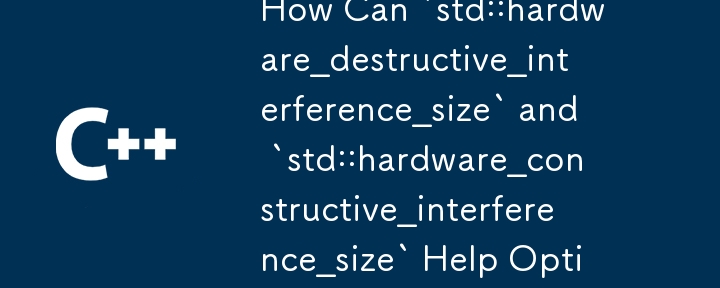

Understanding std::hardware_destructive_interference_size and std::hardware_constructive_interference_size
Cached Line Sizes
std::hardware_destructive_interference_size and std::hardware_constructive_interference_size are constants introduced in C 17 that aim to provide portable hints for optimizing memory access patterns based on the cache-line size of the system.
How they relate to the L1 Cache Line Size
These constants should theoretically give you the size of the L1 cache line, though in practice, this is not always guaranteed. Compilers may estimate or use environmental hints to determine these values.
Use Cases
Compilation and Binary Execution
Since cache line size can vary across machines, using these constants directly in compiled binaries can lead to problems. It is recommended to define a precise value based on known system architecture or use a fallback mechanism to determine the appropriate size at runtime.
Example
Consider the following code:
struct CacheLineObject {
alignas(std::hardware_destructive_interference_size) int value;
};If the system has a cache line size of 64 bytes, declaring an array of CacheLineObject structures will ensure that each object occupies its own cache line, minimizing destructive interference and improving performance.
The above is the detailed content of How Can `std::hardware_destructive_interference_size` and `std::hardware_constructive_interference_size` Help Optimize Memory Access Patterns?. For more information, please follow other related articles on the PHP Chinese website!
 What currency is u-coin?
What currency is u-coin?
 cmd command to clean up C drive junk
cmd command to clean up C drive junk
 Server rental charges
Server rental charges
 Mechanical energy conservation law formula
Mechanical energy conservation law formula
 What is the normal temperature of a laptop?
What is the normal temperature of a laptop?
 What is the difference between css framework and component library
What is the difference between css framework and component library
 How to delete index in mysql
How to delete index in mysql
 Introduction to foreign free vps software
Introduction to foreign free vps software




